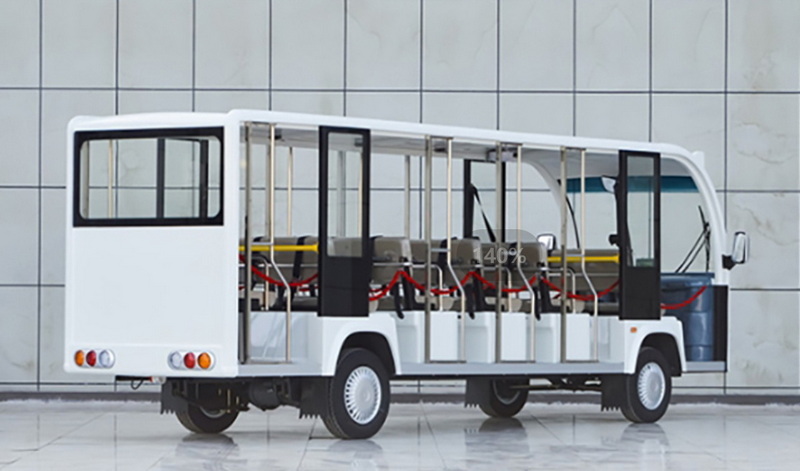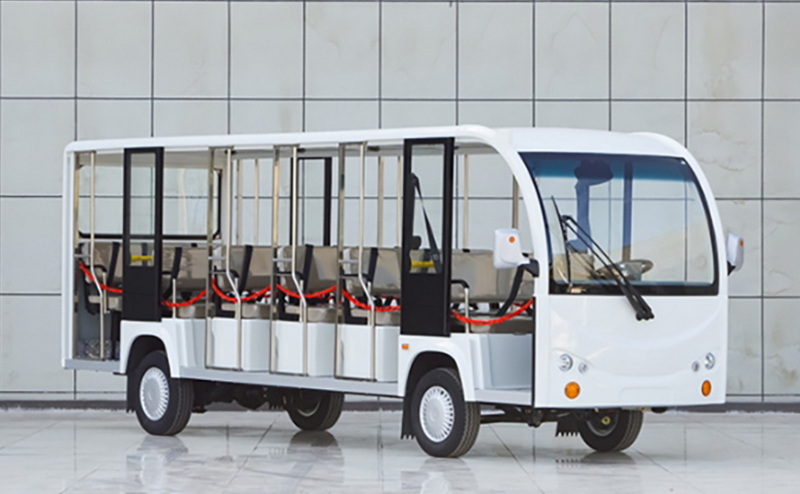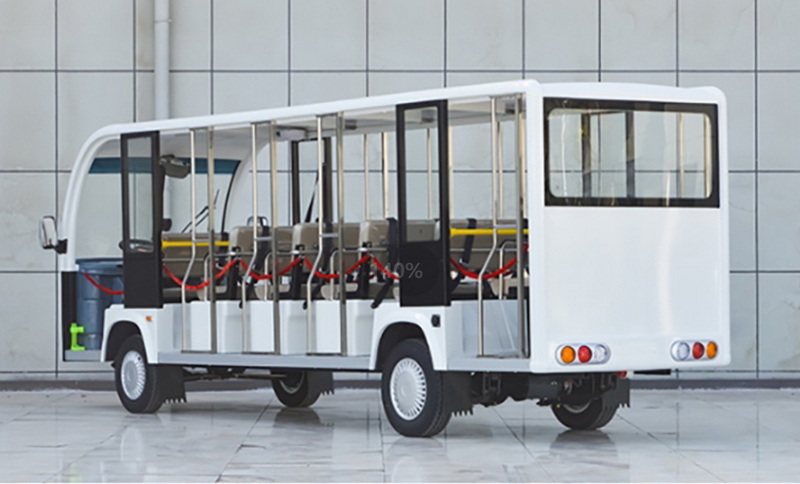Content Menu
● Introduction
● The Rise of Electric Sightseeing Carts in Tourism
● Key Benefits for Tour Operators
>> Enhanced Guest Experience
>> Accessibility
>> Environmental Sustainability
>> Operational Efficiency
>> Safety
● Challenges and Considerations
>> Upfront Investment
>> Terrain Limitations
>> Regulatory Compliance
>> Charging Infrastructure
>> Battery Life and Replacement
● Cost Analysis and ROI
>> Initial Costs
>> Operating Costs
>> Revenue Generation
>> Return on Investment
● Comparing Electric Sightseeing Carts to Other Tour Vehicles
● Leading Electric Sightseeing Cart Builders
>> Guangzhou Langqing Electric Cart Co., Ltd
>> Dongguan Excar Electric Vehicle Co., Ltd (EXCAR)
>> Tri Electric Private Limited
>> Additional Noteworthy Builders
● Case Studies: Real-World Success Stories
>> Case Study 1: Urban Historical Tours
>> Case Study 2: Eco-Resort in Southeast Asia
>> Case Study 3: National Park Accessibility
● How to Choose the Right Electric Sightseeing Cart
>> Assess Your Needs
>> Evaluate Builders
>> Plan for Infrastructure
● Future Trends in Electric Sightseeing Cart Technology
>> Battery Innovations
>> Smart Features
>> Sustainable Materials
>> Integration with Digital Platforms
● Conclusion
● FAQ
>> 1. What are the main advantages of electric sightseeing carts over traditional vehicles?
>> 2. Can electric sightseeing carts be customized for specific tour themes or branding?
>> 3. What safety features are available in modern electric sightseeing carts?
>> 4. Are electric sightseeing carts suitable for all types of terrain?
>> 5. What is the typical range and capacity of electric sightseeing carts?
Electric sightseeing carts are revolutionizing the tourism industry, offering a unique blend of comfort, sustainability, and operational efficiency. As travelers become more environmentally conscious and demand more inclusive experiences, tour operators are increasingly considering whether investing in electric sightseeing carts is a strategic move. This comprehensive guide explores every aspect of electric sightseeing carts, including their benefits, challenges, cost analysis, case studies, and insights from leading Electric Sightseeing Cart Builders. By the end, you'll have a clear understanding of whether these vehicles are the right investment for your tour operation.

Introduction
Tourism is at a crossroads. Modern travelers are not just looking for memorable experiences-they want those experiences to be sustainable, accessible, and comfortable. Electric sightseeing carts, once primarily used on golf courses, are now a common sight in parks, resorts, city tours, and historic sites. But are electric sightseeing carts truly worth the investment for tour operators? This article delves into the features, benefits, challenges, and future of these vehicles, providing you with the insights needed to make an informed decision.
The Rise of Electric Sightseeing Carts in Tourism
The adoption of electric sightseeing carts has surged in recent years, driven by both customer demand for sustainable transportation and regulatory pushes for cleaner urban mobility. These vehicles are now widely used in:
- Theme parks
- Tourist attractions
- Resorts and hotels
- Airports and railway stations
- Urban sightseeing routes
- Golf courses
- Nature reserves
Their popularity is fueled by the need for quiet, eco-friendly, and accessible transportation options that enhance the visitor experience while minimizing environmental impact.
Key Benefits for Tour Operators
Enhanced Guest Experience
Electric sightseeing carts offer a smooth, quiet, and comfortable ride, making them ideal for families, elderly tourists, and groups with mobility needs. Features such as plush seating, easy boarding, panoramic roofs, and audio guide systems create a memorable and enjoyable tour experience.
Accessibility
One of the standout features of electric sightseeing carts is their accessibility. Low floors, wide doors, and ample space make them suitable for all guests, including those with disabilities or limited mobility. This inclusivity can significantly expand your potential customer base.
Environmental Sustainability
Electric sightseeing carts are powered by electricity, resulting in zero tailpipe emissions. This not only helps operators meet eco-friendly standards but also appeals to environmentally conscious travelers. The quiet operation of these vehicles preserves the tranquility of natural and historical sites, further enhancing the guest experience.
Operational Efficiency
Operating costs for electric sightseeing carts are significantly lower than those of traditional fuel-powered vehicles. Electricity is cheaper than gasoline or diesel, and the simpler mechanical design means fewer moving parts and lower maintenance costs. Many Electric Sightseeing Cart Builders offer customizable options for branding, seating configurations, and additional features such as weatherproofing and built-in audio guides.
Safety
Modern electric sightseeing carts are equipped with advanced safety features, including seat belts, handrails, weatherproof seating, anti-slip mats, and smart sensors for obstacle detection. Some models even include driver assistance technologies such as automatic braking and driver impairment detection systems.
Challenges and Considerations
Upfront Investment
While the long-term savings are significant, the initial purchase price of electric sightseeing carts can be substantial, especially for larger or luxury models. However, many operators find that these costs are offset by reduced fuel and maintenance expenses over time.
Terrain Limitations
Electric sightseeing carts are best suited for smooth, flat surfaces such as city streets, parks, and resort grounds. Their use is restricted in hilly or rugged environments due to limited climbing ability and battery range.
Regulatory Compliance
Local regulations may limit where and how electric carts can operate. It's crucial for operators to ensure compliance with city, park, or resort guidelines before making a purchase.
Charging Infrastructure
Reliable charging stations are essential for uninterrupted service. Tour operators must plan for the installation and maintenance of charging infrastructure, including backup solutions in case of power outages.
Battery Life and Replacement
Battery life varies depending on usage, terrain, and climate. Operators should factor in the cost and logistics of battery replacement, as well as the environmental impact of battery disposal.

Cost Analysis and ROI
Initial Costs
The price of electric sightseeing carts varies widely based on size, features, and manufacturer. Entry-level models may start around $5,000–$8,000, while larger or luxury models can exceed $20,000 per unit.
Operating Costs
- Electricity: Charging costs are typically much lower than fueling costs for gasoline or diesel vehicles.
- Maintenance: Electric carts have fewer moving parts, resulting in lower maintenance and repair costs.
- Insurance: Insurance premiums may be lower for electric vehicles, depending on local regulations and usage.
Revenue Generation
- Ticket Sales: Electric carts can increase capacity and frequency of tours, boosting ticket sales.
- Premium Experiences: Operators can charge higher prices for eco-friendly or luxury tours.
- Advertising: Customizable exteriors provide opportunities for branding and advertising partnerships.
Return on Investment
Most operators report a payback period of 2–4 years, depending on usage, ticket pricing, and operational efficiency. The long-term savings in fuel and maintenance, combined with increased revenue opportunities, make electric sightseeing carts a financially sound investment for many tour operators.
Comparing Electric Sightseeing Carts to Other Tour Vehicles
| Feature | Electric Sightseeing Carts | Segways | Diesel/Gas Shuttles | Bicycles |
| Passenger Capacity | High (up to 14+) | Low (1 per Segway) | Medium to High | Low (1 per bike) |
| Accessibility | Excellent | Limited | Good | Poor |
| Environmental Impact | Zero emissions | Zero emissions | High emissions | Zero emissions |
| Terrain Capability | Flat/smooth surfaces | Some off-road ability | Good | Good |
| Comfort | High | Moderate | High | Low |
| Operating Cost | Low | Very low | High | Very low |
| Maintenance | Low | Very low | High | Low |
| Customization | High | Low | Moderate | Low |
Leading Electric Sightseeing Cart Builders
Guangzhou Langqing Electric Cart Co., Ltd
Specializing in electric sightseeing cars and vintage models, Guangzhou Langqing has a strong presence in both China and overseas markets. Their vehicles are known for their reliability, stylish designs, and adaptability to various tourism environments.
Dongguan Excar Electric Vehicle Co., Ltd (EXCAR)
Founded in 2006, EXCAR is a major manufacturer specializing in electric golf carts, sightseeing buses, and utility carts. Known for strict quality control, EXCAR uses components from reputable brands like Trojan (batteries), KDS (motors), and Curtis (controllers). The company offers extensive customization options for color, seating, and branding, making it a top choice for tour operators seeking tailored solutions.
Tri Electric Private Limited
Based in India, Tri Electric Private Limited is a leading builder of electric golf carts, sightseeing buses, and cargo vehicles. The company focuses on exports and offers a wide range of models to meet different tourism needs, from compact 4-seaters to high-capacity shuttles.
Additional Noteworthy Builders
- Marshell Electric Vehicle: Offers a broad range of electric vehicles for tourism, including luxury and utility models.
- Club Car: A global leader in electric and gas-powered carts, known for durability and innovation.
- Yamaha: Renowned for high-performance electric and hybrid vehicles suitable for both golf and sightseeing applications.
Case Studies: Real-World Success Stories
Case Study 1: Urban Historical Tours
A European city tour operator replaced its diesel minibuses with a fleet of electric sightseeing carts from EXCAR. The result was a 30% increase in ticket sales, as tourists preferred the quieter, more comfortable ride through narrow historical streets. The operator also received positive media attention for its commitment to sustainability, leading to new partnerships with local hotels.
Case Study 2: Eco-Resort in Southeast Asia
An eco-resort in Thailand invested in electric sightseeing carts from Marshell Electric Vehicle to shuttle guests between villas, restaurants, and the beach. The carts blended seamlessly with the resort's natural setting, reduced noise pollution, and enabled the resort to market itself as a green destination. Guest satisfaction scores improved, and the resort saw a measurable increase in repeat bookings.
Case Study 3: National Park Accessibility
A North American national park introduced electric sightseeing carts from Club Car to provide accessible tours for visitors with mobility challenges. The program was so successful that the park expanded its fleet, making it possible for thousands of additional visitors to experience the park's scenic trails without environmental disruption.
How to Choose the Right Electric Sightseeing Cart
Assess Your Needs
- Capacity: Determine the average group size you'll be transporting.
- Terrain: Consider the type of surfaces and gradients the cart will need to navigate.
- Range: Estimate the daily distance and ensure the cart's battery can handle it.
- Weather: Choose models with weatherproofing if operating in rainy or sunny climates.
Evaluate Builders
- Research Electric Sightseeing Cart Builders with a track record of reliability, safety, and after-sales support.
- Request references and case studies from similar tour operations.
- Compare warranties, customization options, and available upgrades.
Plan for Infrastructure
- Ensure you have adequate charging stations and power supply.
- Train staff on safe operation and basic maintenance.
- Develop a maintenance schedule to maximize vehicle lifespan.
Future Trends in Electric Sightseeing Cart Technology
Battery Innovations
Advancements in lithium-ion and solid-state batteries are increasing the range and reducing the charging time of electric sightseeing carts. Some models now offer fast-charging capabilities, allowing for near-continuous operation throughout the day.
Smart Features
Modern carts are being equipped with GPS tracking, real-time diagnostics, automated audio guides, and even autonomous driving capabilities. These features enhance both safety and the overall guest experience.
Sustainable Materials
Manufacturers are increasingly using recycled and sustainable materials in the construction of electric sightseeing carts, further reducing their environmental impact.
Integration with Digital Platforms
Tour operators can now integrate electric sightseeing carts with booking systems, mobile apps, and digital ticketing, streamlining operations and improving customer service.
Conclusion
Electric sightseeing carts are more than just a transportation solution-they are a strategic investment for tour operators seeking to enhance guest experiences, reduce environmental impact, and improve operational efficiency. While the initial costs and infrastructure requirements are important considerations, the long-term benefits, especially when working with reputable Electric Sightseeing Cart Builders, make these vehicles a compelling choice for modern tourism businesses. As technology continues to advance and traveler expectations evolve, electric sightseeing carts are poised to become an essential part of the tourism landscape.

FAQ
1. What are the main advantages of electric sightseeing carts over traditional vehicles?
Electric sightseeing carts offer zero emissions, reduced noise, lower operating costs, and enhanced accessibility for all passengers. They are ideal for eco-friendly and inclusive tourism experiences.
2. Can electric sightseeing carts be customized for specific tour themes or branding?
Yes, many Electric Sightseeing Cart Builders provide extensive customization options, including branded exteriors, themed seating, audio systems, and more to match the operator's needs.
3. What safety features are available in modern electric sightseeing carts?
Modern carts are equipped with seat belts, handrails, weatherproof seating, anti-slip mats, smart sensors for obstacle detection, and even driver impairment detection systems in advanced models.
4. Are electric sightseeing carts suitable for all types of terrain?
These carts are best for smooth, flat surfaces such as city streets, parks, and resort grounds. They are not recommended for hilly or rugged terrain due to limited climbing ability.
5. What is the typical range and capacity of electric sightseeing carts?
Ranges vary by model but typically fall between 60–80 km per charge. Capacities range from small 4-seaters to large 14+ passenger models, depending on the builder and configuration.










































